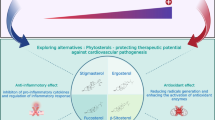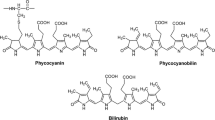Abstract
The aim of this study was to investigate the effect of combined therapy of vitamin E and selenomethionine to pro/ antioxidant status in experimental hypercholesterolemia. Thirty male rabbits were included in the study and randomized into five groups consisting of the control group (standard diet) and four experimental groups staying on a diet rich in cholesterol (0.5 g/100 g diet): cholesterol group and groups supplemented cholesterol with selenomethionine (12.5 μg/kg body mass/24 h) or vitamin E (10 mg of Dl-α-tocopherol/kg body mass/24 h) or combination of the above antioxidants for 3 mo. The activity of superoxide dismutase (SOD), glutathione peroxidase (GPX), and catalase (CAT) as well as the concentration of malondialdehyde (MDA) was estimated in the blood during every month of experiment. Increased activity of SOD and GPX with a decreased concentration of MDA in comparison to the cholesterol diet was found mainly in the combination of study antioxidants. The supplementation of the cholesterol diet with combined doses of vitamin E and selenomethionine appears to prevent the lesions induced by experimental hypercholesterolemia much more efficiently than single doses of the above.
Similar content being viewed by others
References
D. G. Harrison, Z. Galis, S. Parthasarathy and K. Griending, Oxidative stress and hypertension, in Hypertension Primer. The essentials of High Blood Pressure, J. L. Izzo and H.R. Black, eds), Lippinocott Williams., & Wilkinson, Baltimore, MD, pp 163–166 (1999).
N. S. Dhalla, R. M. Temsah, and T. Netticadan, Role of oxidative stress in cardiovascular diseases, J. Hypertens. 18, 655–673 (2000).
M. N. Diaz, B. Frei, J. A. Vita and J. F. Keanney, Jr., Antioxidants and atherosclerotic heart disease, N. Engl. J. Med. 337, 408–416. (1997).
L. Rittie, J. C. Monboisse, M. C. Gorisse, and P. Gillery, Malondialdehyde binding to proteins dramatically alters fibroblast functions, J. Cell Physiol. 191, 227–236 (2002).
J. Backman and L. Kronberg, Identification of a novel fluorescent adduct formed in the reaction of malonaldehyde with adenosine, Chemosphere 58, 637–643 (2005).
W. Luczaj and E. Skrzydlewska, DNA damage caused by lipid peroxidation products, Cell Mol. Biol. Lett. 8, 391–413. (2003).
L. J. Niedernhofer, J. S. Daniels, C. A. Rouzer, R. E. Greene, and L. J. Marnett, Malondialdehyde, a product of lipid peroxidation, is mutagenic in human cells, J. Biol. Chem. 278, 31426–31433 (2003).
D. C., Schwenke and S. R. Behr, Alpha-tocopherol and probucol reduce autoantibody titer to MDA-LDL in hypercholesterolemic rabbits. Free Radical Biol. Med. 31, 778–789 (2001).
R. K. Li, M. J. Sole, D. A. Mickle, J. Schimmer, and D. Goldstein, Vitamin E and oxidative stress in the heart of the cardiomyopathic syrian hamster., Free Radical Biol. Med. 24, 252–258 (1998).
S. Schaffer, S. Schmitt-Schillig, W. E. Muller, and G. P. Eckert, Antioxidant properties of Mediterranean food plant extracts: geographical differences, J. Physiol. Pharmacol. 56, 115–124 (2005).
G. Chahoud, Y. W. Aude, and J. L. Mehta, Dietary recommendations in the prevention and treatment of coronary heart disease: do we have the ideal diet, yet?, Am. J. Cardiol. 94, 1260–1267 (2004).
C. Rojas, S. Cadenas, M. Lopez-Torres, R. Perez-Campo, and G. Barja, Increase in he glutathione redox ratio and total antioxidant capacity and decrease in lipid peroxidation after vitamin E dietary supplementation in guinea pigs, Free Radical Biol. Med. 21, 907–915 (1996).
S. Ozdil, R. Yanardag, M. Koyuturk, S. Bolkent, and S. Arbak, Protective effect of ascorbic acid, Dl-alpha tocopherol acetate, and sodium selenate on ethanol-induced gastric mucosal injury of rats, Biol. Trace Element Res. 99, 1–3 (2004).
J. Jawien, P. Nastalek, and R. Korbut, Mouse models of experimental atherosclerosis, J. Physiol. Pharmacol. 55, 503–517 (2004).
K. Winterhalter, Hemoglobins, porphyrins and related compunds, in Clinical biochemistry: Principles and Methods, M. Curtius and M. Roth, eds., De Gruyter, Berlin, pp. 1305–1322 (1974).
H. Ohkawa, N. Ohishi, and K. Yagi, Assay for peroxides in animal tissues by thiobarbituric acid reaction, Anal. Biochem. 95, 351–358 (1979).
Y. Oyanagui, Revaluation of assay methods and establishment of kid for superoxide dismutase activity, Ann. Biochem. 142, 290–296 (1984).
H. Aebi, Catalase in vitro, Methods Enzymol. 105, 121–126 (1984).
D. Pagalia and W. Valentine, Studies on the quantative and qualiative characterisation of erythrocyte glutathione peroxidase. J. Lab. Clin. 70, 158–169 (1967).
D. C. Schwenke, Antioxidants and atherogenesis, J. Nutr. Biochem. 9, 424–445 (1998).
P. Ferroni, S. Basili, A. Falco, and G. Davi, Oxidant stress and platelet activation in hypercholesterolemia. Antioxidant Redox Signal. 6, 747–756 (2004).
E. L. Saunders, M. D. Maines, M. J. Meredith, and M. L. Freeman, Enhancement of homooxygenas-1 synthesis by glutathione depletion in Chinese hamster ovary cells, Arch. Biochem. Biophys. 288, 368–373 (1991).
E. Lonn, S. Yusuf, V. Dzavik, et al., Effects of rampiril and vitamin E on atherosclerosis: the study to evaluate carotid ultrasound changes in patients treated with rampiril and vitamin E (SECURE), Circulation 103, 919–925 (2001)
S. Yusuf, G. Dagenais, J. Pogue, J. Bosch, and Bosch, and P. Sleight, Vitamin E supplementation and cardiovascular evets in high-risik patients, The Heart Outcomes Prevention Evaluation Study Investigators, N. Engl. J. Med. 342, 154–160 (2000).
T. Colins, Biology of disease. Endothelial nuclear factor-B and the initiation of the atherosclerotic lesion. Lab. Invest. 68, 499–508 (1993).
G. F. Gaetani, H. N. Kirkman, R. Mangerini, and A. M. Ferraris, Importance of catalase in the disposal of hydrogen peroxide within human erythrocytes. Blood 84, 325–330 (1994).
E. Beytut and M. Aksakal, Effects of dietary vitamin E and selenium on antioxidative defense mechanisms in the liver of rats treated with high doses of glucocorticoid, Biol. Trace Element Res. 91, 231–241 (2003).
Y. Gao, Y. Liu, G. Deng, and Z. Wang, Distribution of selenium-containing proteins in human serum, Biol. Trace Element Res. 100, 105–115 (2004).
L. E. Cardoso and P. A. Mourao, Glycosaminoglycan fractions from human arteries presenting diverse susceptibilities to atherosclerosis have different binding affinities to plasma LDL, Arterioscler. Thromb. 14, 115–124 (1994).
Author information
Authors and Affiliations
Rights and permissions
About this article
Cite this article
Birkner, E., Kasperczyk, S., Zalejska-Fiolka, J. et al. Influence of selenomethionine and vitamin E on the antioxidative system in animals with experimentally induced hypercholesterolemia. Biol Trace Elem Res 111, 137–149 (2006). https://doi.org/10.1385/BTER:111:1:137
Received:
Revised:
Accepted:
Issue Date:
DOI: https://doi.org/10.1385/BTER:111:1:137




